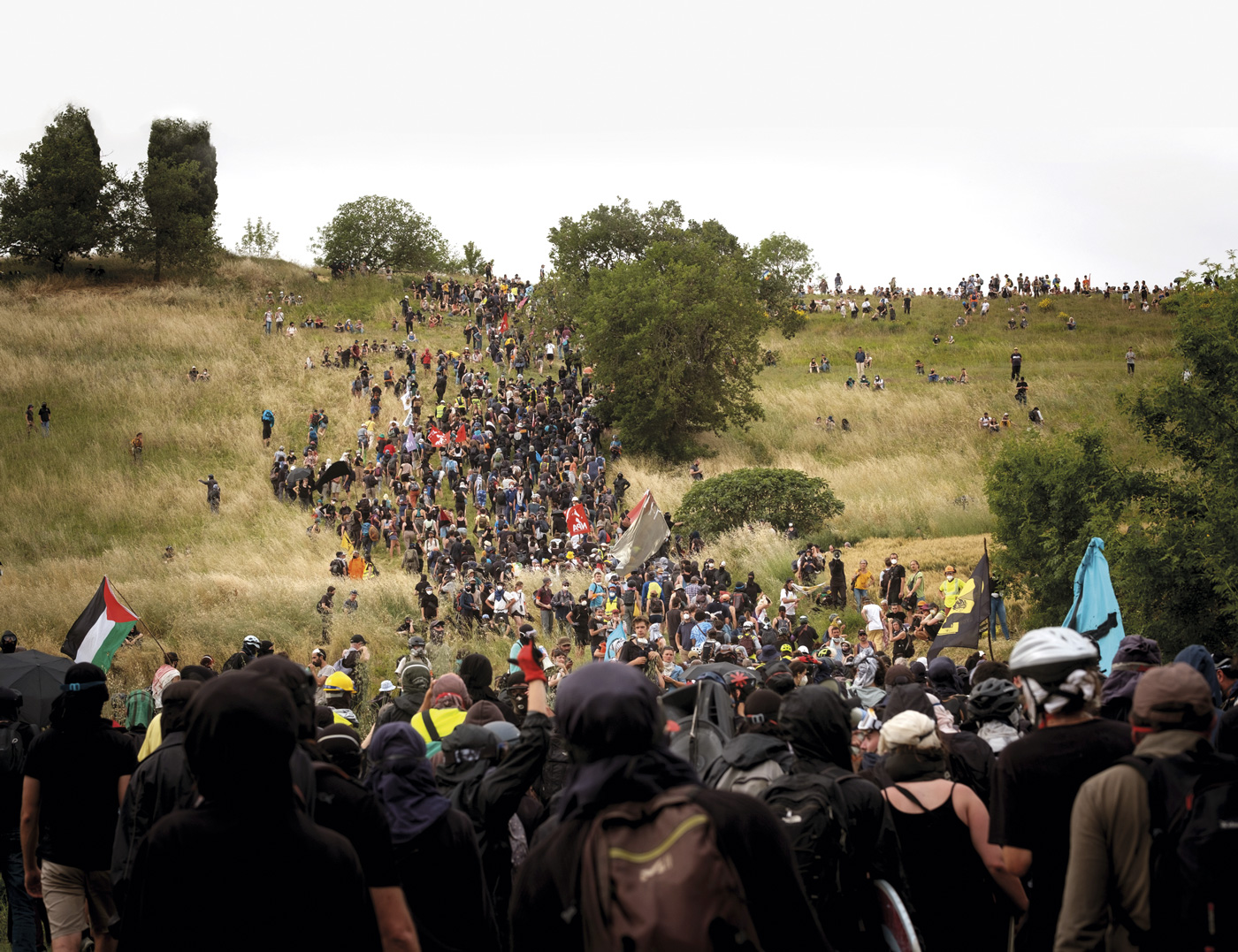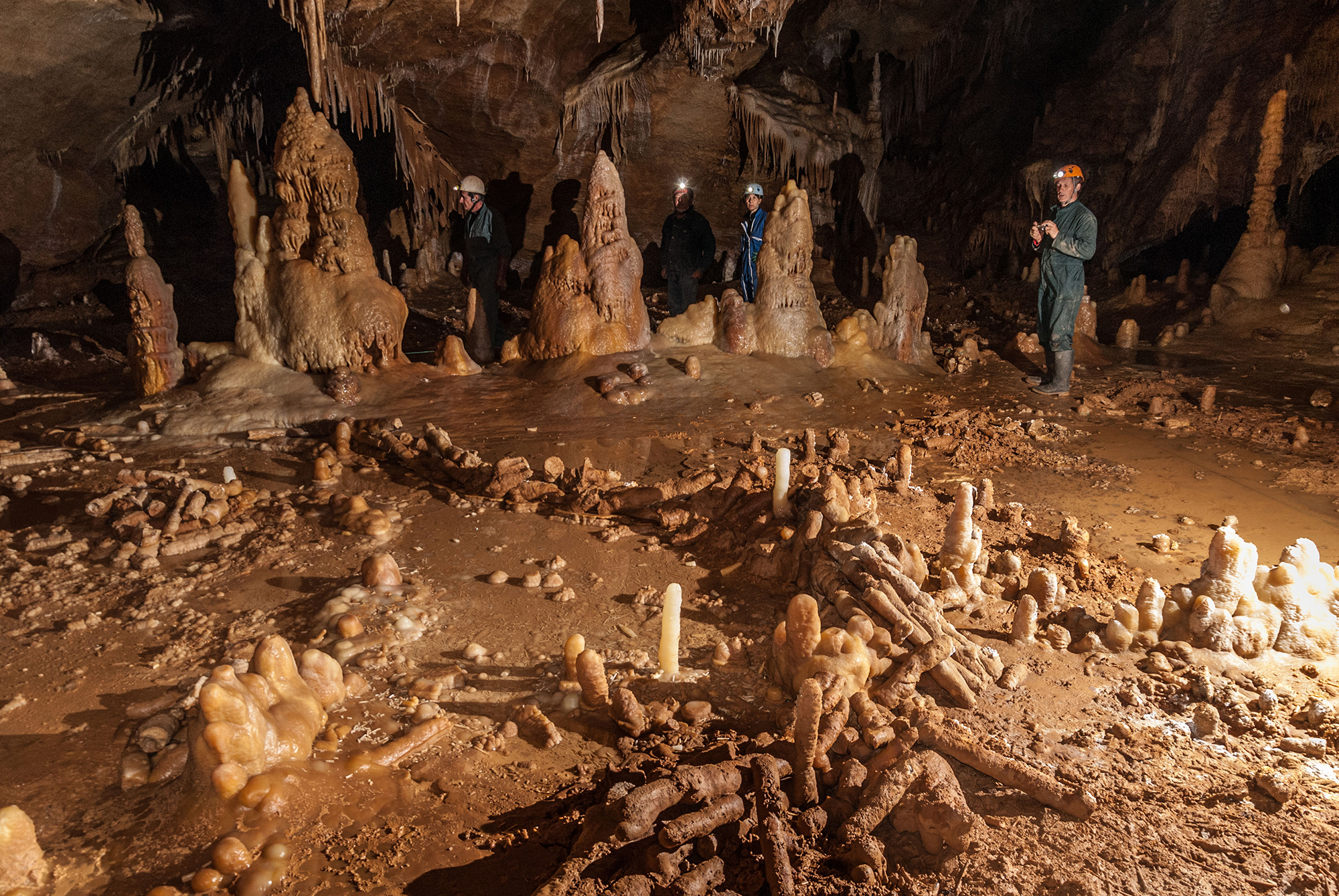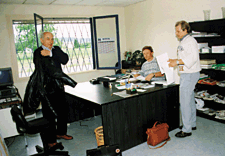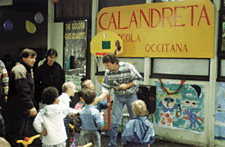A human-transformed ecosystem in the port of global warming
- For the Basques Aunitz, the Campos de Gascuña (Occitania) are a holiday place. Beaches of long dunes, endless pine forests towards the interior and almost more campsites than the villages. To the south, Aturri's estuary marks the border with Lapurdi. Tourist destinations such as the Bay of Arcachon and the Cape of Ferret to the north, and the estuary of Bordeaux and Gironde.
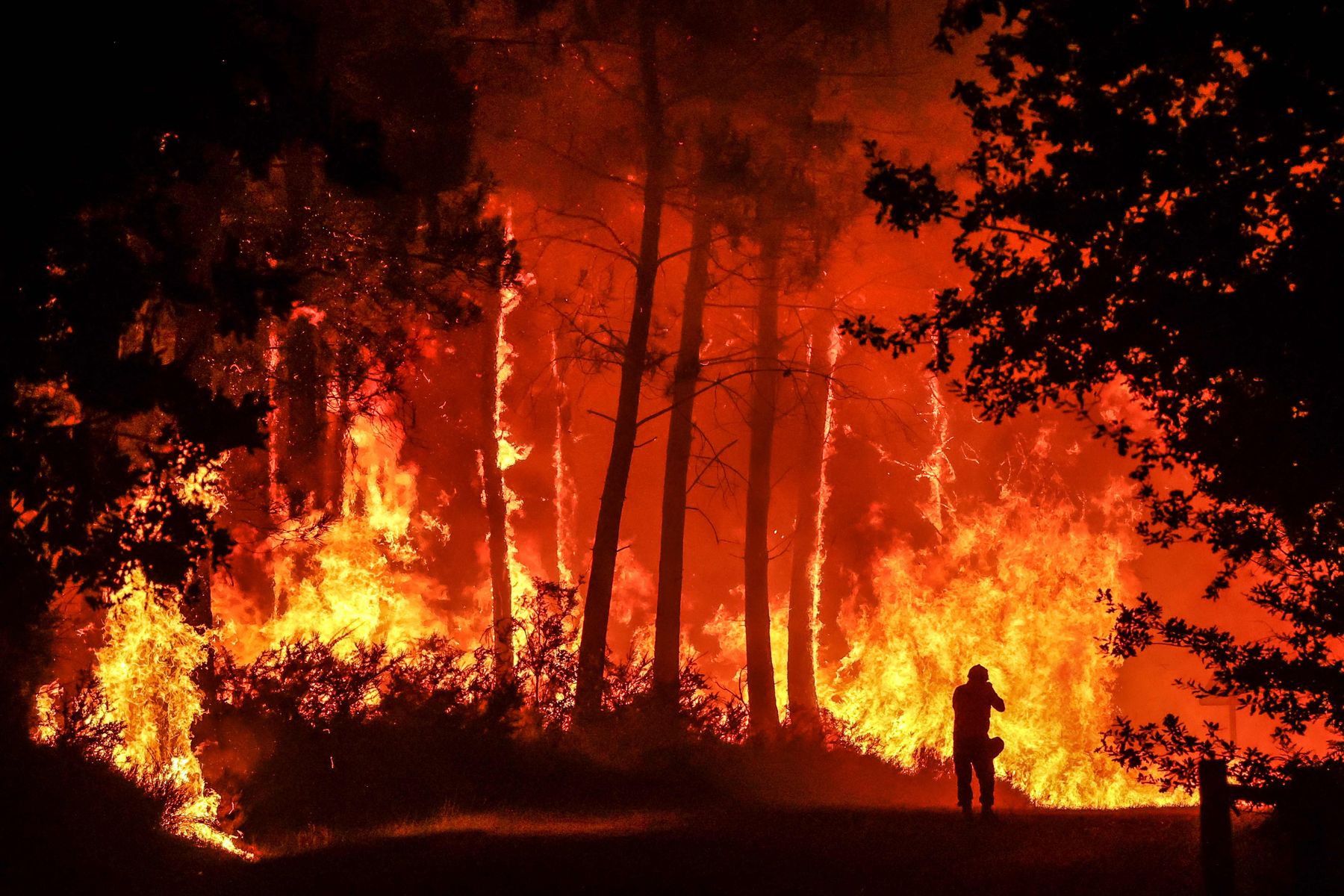
However, in July 2022 Landa brought us another reason for high media charges. In a few days there have been two major fires that have wreaked havoc. The first has been fired on the same coast, in La Teste de Buch, and the second towards the interior, in Landiras. According to the first estimates, some 20,000 hectares have been burned. This was not remembered since the 1949 massacre, when the fire devoured 52,000 hectares, of which 25,000 were pine forests, 82 people died and Bordeaux was covered by the ashes. Global warming will increase the risk of fire, so it is important to reflect on our relationship as a society with the environment to know if we are limiting or breaking the risk.

It was not always a forest to contextualize
what happened in the Landes, it is necessary to begin studying the current land cover. According to data from the National Geographic Institute of France (IGN), more than 45% of the total area of the departments of Landeta and Gironde is covered by “forests”, but below this figure there is a more uncomfortable reality. The Landeta Forest has an area of 1.4 million hectares, of which more than 90% is privately owned, of which only two hundred owners account for 25% of the total area. This large area is practically covered by single-specific conifer plantations. The dominant species is the maritime pine (Pinus pinaster), which grows for sale on the market of the wood and paper industry. In recent years there have been more than once controversy over the management of these plantations, including the use of glyphosate.
But it wasn't always that way. Until the 19th century, forests were only at certain points: Lacanau, Arcaisho, Biscarròssa and Marensin mainly. However, most of the territory consisted of marshes and marshes. In it, according to the degree of humidity, the vegetation of bushes and junks predominated: brews, brooms, argomas, ferns, etc. Most of them were communal lands, that is, the neighbors of each community could exploit them freely, within collective regulations.
With land inadequate for cultivation, grazing was the main trade of the inhabitants of the region. The pastors took refuge in small dots called airials, from where the herds were taken to the field to avoid swamps walking on the large wooden legs. These pastors had a nomadic and lonely life, witness of a characteristic culture.
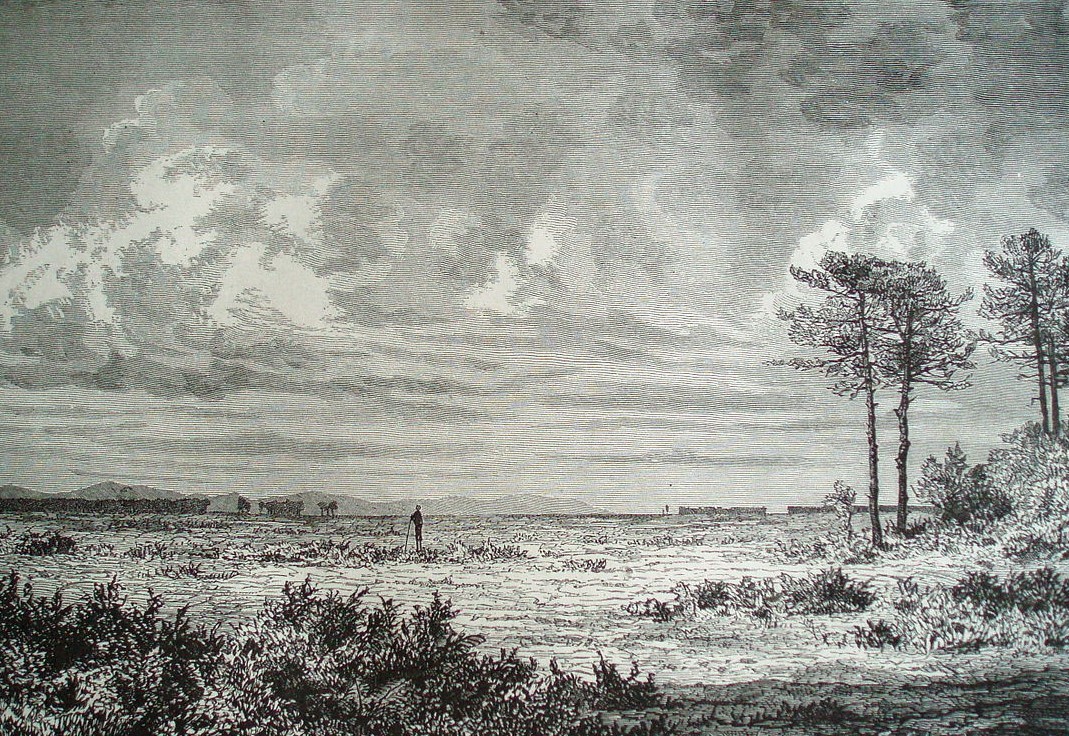
The liberal State, faced with local communities in the 18th century, along with the dissemination of the ideas
of the Enlightenment, dominated throughout Europe, but especially in France, the demands to rationally reformulate society, the economy and cultivation. An example of this is the physiocratic school created by François Quesnay. Traditional rural life, of course, did not fit the parameters proposed by the Enlightenment, so it was considered exotic and even wild. This image was accentuated in the 19th century, since the economy based on the collective and extensive management of communal lands was considered antagonistic to progress and reason.
In this sense, the geographer François Flamichon described Landa in 1815 as: “Immersed in these vast deserts, the eye is amazed at an unexpected uniform vision, seeing 50 leagues the tip of the Pyrenees. (…) The spectator does not distinguish the small nuances of the territory in the whole extent of the surrounding landscape on all sides. In it you see tiny scattered pinares. (…) There is no more boring thing for the eye, no more flavor than the appearance of Landen of Bordeaux”. The same image was given by naturalist and politician Jean-Baptiste Bory of Saint-Vincent when he defined Landa as “desert” in 1826. Over the next decades, it was common to compare Landa to faraway places: with savannahs from Africa and Missouri, Siberian taiga, even the Sahara.
For the missionaries of progress, the next step seemed logical: it was necessary to bring to this territory “civilization”, as the United States was “colonizing” North America (Henry Ribadieu, 1859). Some investors took care of this by trying to buy land in Landeta and create rice or tobacco plantations through drainage projects, but in principle they were not successful, as they met with opposition from local communities.
In this context, it is necessary to understand the political strategy that was launched at that time to “rationalize” the exploitation of Landen. The process began at the end of the 18th century, in the framework of the construction of the liberal State undertaken by the French Revolution; in the following decades decrees were issued for the fragmentation and privatization of the communal lands, with the largest number of communal lands in the State at Landeta. The noble Yzarn of Freissinet clearly explained it in 1837: “Communal lands hinder progress, as they could use the land needed for the cultivation of a sheep to feed an entire family. (…) We can understand that we have in front of our door a virgin territory that can become the starting point for wonderful companies that invest their money in these plains that speculators know and appreciate well.” In other words, the liberal State brought with it the national State, which for the new ideology was the only competent entity to determine the interests of the people and regulate the organization of the territory from the perspective of market freedom, above the local communities.

Thus,
in the mid-nineteenth century, the French State began true internal colonization in Landeta. In 1849, engineer Jules Chambrelent bought 400 hectares of land in the village of Cestàs. In it he designed a network of orthogonal canals for the drainage of marshes for the subsequent planting of pines. The experiment was successful and Chambrelente showed its results in the Universal Exhibition of 1855.
Emperor Napoleon III showed great interest in his project and in a few years promoted a special law to extend the drains to the whole length of Landen: Law of 1857 on Sanitation and Cultivation of the Landes of Gascuña. This text gathered three main ideas. First of all, all municipalities would have an obligation to drain their communal lands, through ditch systems, to lower the water table level and to plant pines. Secondly, the land so drained should be divided into small land and sold at auction, within a maximum period of 12 years. Thirdly, buyers would be in charge of performing and exploiting tree plantations.
Consequently, in a few years the aspect of Land changed radically, replacing the vast swamps of popular land with a large forest of monospecific plantations, responding to the interests of the liberal State and industrial capitalism. The last rural parts were sold in 1914. The new landowners preferred pine plantations to supply the chemical industry that started and developed the resin.
With the disappearance of communal lands, local communities lost their traditional lives. Since the middle of the 19th century, the population of Landeta has been declining and aging considerably, due to the massive migration of young people to the main urban centers of the State. Those who remained there had no choice but to start working as employees in the plantations. They went from being pastors to growing prolariums. Some revolt attempts began with frequent plantation burning and strikes, especially until the 1930s. But gradually, the resin from the Landes was losing competitiveness between cheaper labour imports, and many of the plantations were abandoned. Thus was born the terrible fire of 1949, one of the deadliest in the history of the French State.
Since then, pine plantations have been restored and expanded to the largest industrial forest in western Europe. Wood and paper are now produced, but the result is the impoverishment of ecosystems and the loss of biodiversity and the disappearance of local communities. Despite the growth of the population since the mid-twentieth century, this growth is mainly linked to tourism and has concentrated in coastal holiday areas.
Two weeks ago we left the Occitans preparing their people for war. It wasn't any war. During the 13th century, the sieges were ruthless in the territory of Occitania and suffered unforgettable violence.
We said the Crusade was, in fact, heraxial anti-cataract. The world of... [+]
Ez da sarri izaten herri ttipi zapalduetako zinema nazionala ikusteko aukera, tresneria gutxiz eginak eta distribuitzeko... [+]
Ezin ukatzekoa dugu egungo belaunaldiek, gazteenek bereziki, Naturalezarkiko duten kezka larria. Mende honen haseratik, eta batez ere bigarren gerla handiaz geroztik, murgildurik... [+]
ZERUKO ARGIA honetan garai onez jakinarazi zenez, datorren astean A.I.D.L.C.M. delako... [+]
alondra/alouette.











